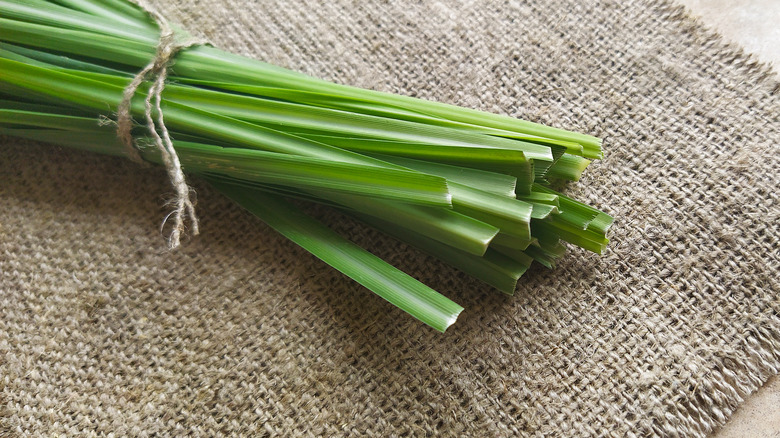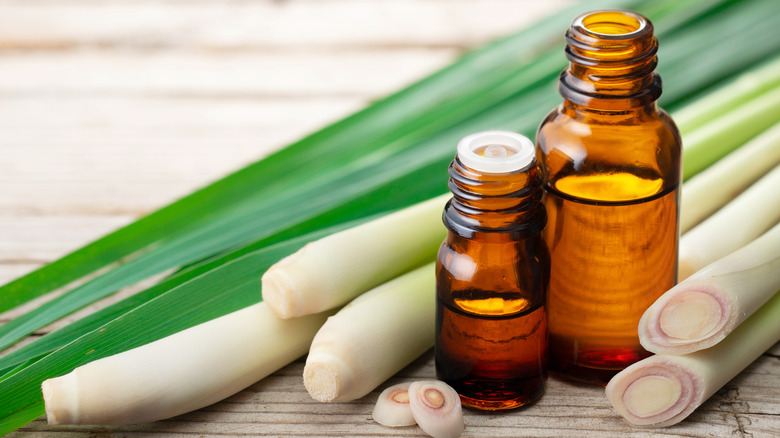You've Been Preparing Lemongrass All Wrong
Lemongrass is an herb featured throughout a variety of South Asian cuisines, but, because it grows as a stalk and can get fibrous, it can sometimes be a nuisance to work with. Woodsy and greenish-yellow, it has a subtle lemon aroma in its raw form that could prove both intriguing and intimidating for many a first-time cook.
Masterclass calls lemongrass "a perennial grass" that "grows in clusters and can reach six to ten feet in height." When used in dishes, it releases a fresh, verdant, ginger-like flavor. It is commonly part of soups, stews, curries, salads, cocktails, and even desserts. Lemongrass is also often combined with coconut milk and other herbs.
It's important to note that lemongrass can be deployed in many ways. Per Masterclass, some dishes call for an infusion, which means that you need to gently cook the stalk, infusing the cooking liquid with the flavor of the lemongrass before removing the hard-to-eat stalks. In other dishes, you will use minced or finely chopped tender lemongrass that is entirely edible. Lastly, other recipes call for lemongrass to be pounded — sometimes with other ingredients — which also yields an edible product. Lastly, The Spruce Eats reports that there are also lemongrass powders that make preparation even simpler than using the plant directly.
How do you prepare lemongrass?
If you're looking to use the tender parts of the lemongrass, Bon Appétit notes that the first step is to "start by peeling the stiff outer leaves away from the stalk to reveal the slightly softer under layers." Afterward, you "slice the grass in two spots, about half an inch from the root [...] where the whitish color begins to turn green." Smashing, bending, or flattening the stalk can help release flavorful and fragrant oils.
Don't throw away the rest of your lemongrass just yet, however. According to The Spruce Eats, most Thai cooking actually utilizes the middle of the stalk, which often appears as the yellow section of the plant. These aren't edible, though, so definitely be sure not to eat those stalks. Think of them like bay leaves, instead. This means that the middle bits of lemongrass are excellent for adding flavor, but decidedly not excellent to chew, so remove them before serving.
While you're at it, don't throw out any of the tougher leaves after you trim them. Fine Cooking notes that they can make a delicious (and super healthful) tea made by steeping the lemongrass bits in boiling water. Lemongrass may also have some beneficial health properties, reports Healthline, from improving your digestion to potentially helping manage cholesterol and weight. It may also reduce methane emissions from cows, which is why Burger King added lemongrass to some cattle's diets in an effort to combat climate change.

